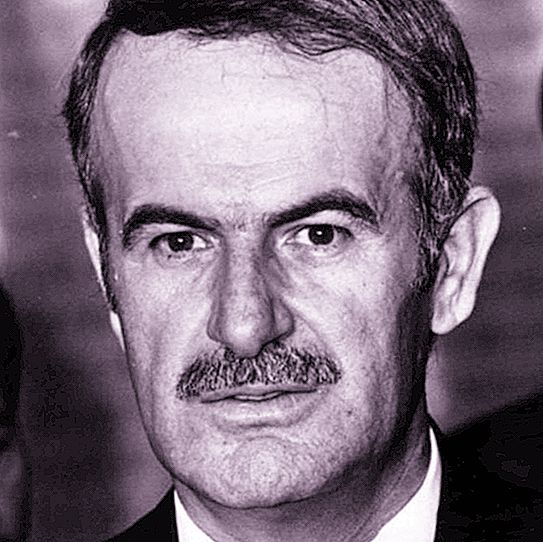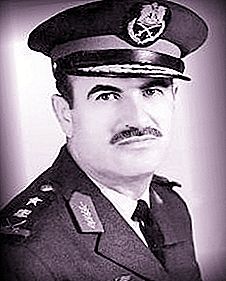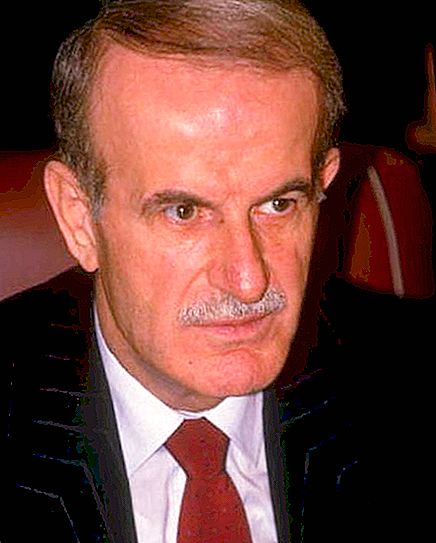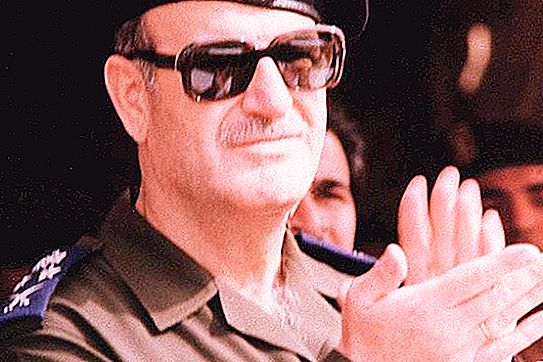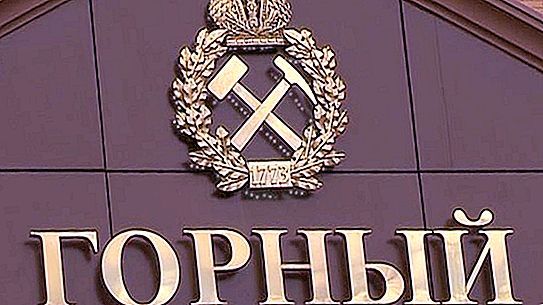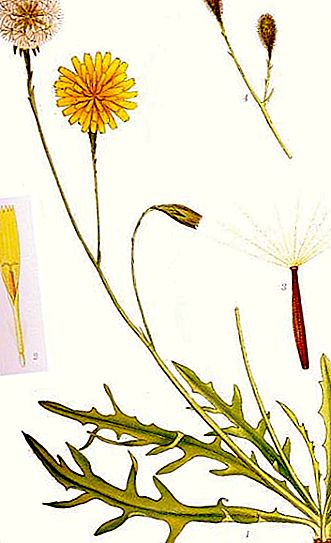Hafez al-Assad (October 6, 1930 - June 10, 2000, Damascus) - Syrian politician, general secretary of the Ba'ath party, prime minister of Syria (1970-1971) and its president (1971-2000).
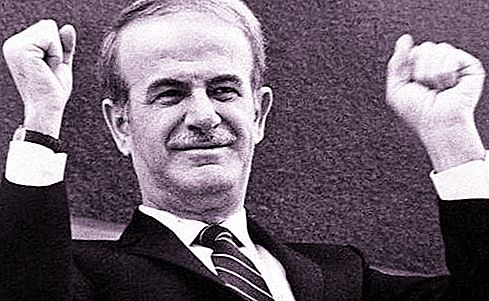
Origin
Hafez al-Assad, whose biography began in the village of Kardah, in the province of Latakia, was born in a family belonging to the Alawite religious community. His parents were Nasa and Ali Suleiman al-Assad. Hafez was Ali’s ninth son and fourth from his second marriage. The father had only eleven children and was known for his strength and marksmanship.
The Assad family comes from Suleiman al-Wahhish, the grandfather of Hafez al-Assad, who also lived in the northern Syrian mountains in the village of Kardah. Locals nicknamed him Wahhish, which means "wild beast" in Arabic. During the First World War, the Ottoman governor of Vilayet Aleppo sent troops to the Kardahi region to collect taxes and recruit recruits. They were defeated by a detachment of peasants led by Suleiman al-Wahhish, although the rebels were armed only with sabers and old muskets.
Hafez al-Assad could also be proud of his father Ali Suleiman, who was born in 1875. Being highly respected among the locals, he opposed the French occupation of Syria after the end of the First World War. He made his nickname Assad, which means “lion, ” by his last name in 1927. Having lived until 1963, he had the opportunity to see the son gradually approaching the highest authority in the country.
Childhood and years of study
The Alawites initially opposed the single Syrian state, as they thought that their status as a religious minority would not allow them to take a worthy position in it. And father Hafez supported these moods. When the French left Syria, many Syrians did not trust the Alawites for their former support of France. Hafez al-Assad left his native Alawite village, having begun his education at the age of nine in the Sunni Latakia (the Sunnis are the main religious community among all Muslims, the second largest is the Shiite community, which are also religiously adjacent to the Alawites). He was the first in his family to attend high school, but in Latakia, Assad faces manifestations of religious hostility from the Sunnis. Hafez al-Assad was an excellent student, won several prizes for academic excellence at the age of about 14 years.
Political Opinion Formation
Assad lived in a poor, predominantly Alawite part of Latakia. In order to fit into the prevailing mood around him, he had to choose a political party to support, which was traditionally welcomed by the Alawites. These parties were the Syrian Communist Party, the Syrian Social-Nationalist Party (SNPP) and the Ba'ath Party. Assad last joined in 1946, although some of his friends belonged to the SSNP. The Ba'ath Party (rebirth) combined the idea of creating a single Arab state with a socialist ideology.
Beginning of activity in the Ba'ath Party
Assad was an activist in the party, an organizer of Ba'ath student cells, and an agitator for the ideas of the Ba'athists in the poor layers of Latakia and the surrounding Alawite villages. He opposed the Muslim brothers, who were supported by wealthy and conservative Muslim families. His high school students came from both the rich and the poor. Hafez al-Assad quite naturally joined him in poverty, in the Sunni Muslim youth from the Ba'ath party, which was opposed by members of the Muslim brotherhood. At that time, many young Sunnis became his friends. Some of them will later be his political allies.
While still very young, Assad became quite visible in the party as an organizer and recruiter, he was the head of the Ba'athist committee of students in his school from 1949 to 1950. During his political career at school, he met many people who would serve him when he became president.
Military career
In 1950, Hafez al-Assad graduated from high school. He dreams of becoming a doctor, but for his ninth son in the family there is no money to study. Just at that time, the young Syrian Republic began to form its own Armed Forces, and the young politician was offered to enter the military academy in the city of Homs. He agreed, but soon transferred to a flight school in Aleppo, which he graduated in 1955, receiving the first rank of lieutenant of the Syrian Air Force. This year also includes his marriage to Anis Mahlouf, who became his only life partner.
During the Suez crisis, Assad went to Egypt as part of a group of military pilots to support President Nasser in his confrontation with Britain and the United States. In 1957, he was sent to the USSR for a nine-month training in aerobatic engineering of the MiG-17 aircraft.
In 1958, under the influence of nationalist pan-Arabists, the UAR was formed as part of Syria and Egypt under the general leadership of Gamal Abdel Nasser. Assad opposed this confederation because he believed that the interests of Syria were infringed on it. However, despite the fact that many Ba'athists were removed from the civil service during this period, Assad remained in the army and continued to pursue a career.
After a series of military coups, the alliance of Syria with Egypt was first terminated in 1961, and then a coup occurred on March 8, 1963. According to its results, the Ba'ath party formed a government that began socialist transformations, and Captain Assad, who was an active participant in those events, quickly went on promotion.
He received the rank of major, and then lieutenant colonel, and by the end of 1963 he led the Syrian Air Force. By the end of 1964, he was appointed Air Force commander with the rank of Major General. Assad gave privileges to Air Force officers, appointed his proxies to all important posts, and created an effective Air Force intelligence service that became independent from other Syrian intelligence agencies. She was assigned tasks outside the jurisdiction of the Air Force. Assad prepared himself for an active struggle for power.
Presidential climb
In 1966, after another military coup, which did not make any noticeable changes in the country's political course, a new Syrian defense minister was appointed, who became Hafez Assad. Following the defeat in the six-day war of 1967 against Israel, the Syrian government was discredited. At that time, the real ruler of Syria was Salah Jadid, who formally held only the post of deputy secretary general of the Ba'ath party.
In his quest for power, Assad first forced the resignation of Jadid controlled by Prime Minister Yusuf al-Zuayin in 1968, and in 1970 overthrew Jadid himself, who was arrested and remained in custody until his death in 1993.
In 1970, the new Prime Minister of Syria, Hafez Asad, appeared, and since 1971, the President (his re-election took place in 1978, 1985 and 1991). In foreign policy, he continued his previous course towards rapprochement with the USSR and confrontation with the United States and Israel. But in the Doomsday War of 1973, Syria managed to regain only a small part of the Golan Heights occupied by Israel since 1967.
Hafez al-Assad - President
The main pillar of his power was the army and intelligence services. He tried to reform the country and strengthen its military power. However, his efforts led to confrontation with most Arab countries in the region and to international isolation. But at the same time, Assad gave Syria political stability for the first time since it gained independence. Under Assad’s government in Lebanon, in 1976, Syrian rule was established, which ended the brutal civil war and attacks from Israel. Islamists and Muslim brothers fiercely resisted the Assad regime, but were crushed in 1982 during their rebellion, known as the Hama Massacre.
A marked cult of the president’s personality existed in the country, and his bronze statues were installed on the central squares of large cities of the country. Posters with his portrait flaunted on the facades of buildings.
In the first Persian Gulf War between Iraq and Iran 1980-1988. he supported Iran, in the Persian Gulf War from 1990 to 1991, he took part in the anti-Iraq coalition. In the 1990s, Assad turned to the West and the conservative states of Arabia to facilitate peace negotiations with Israel, which, however, failed.

